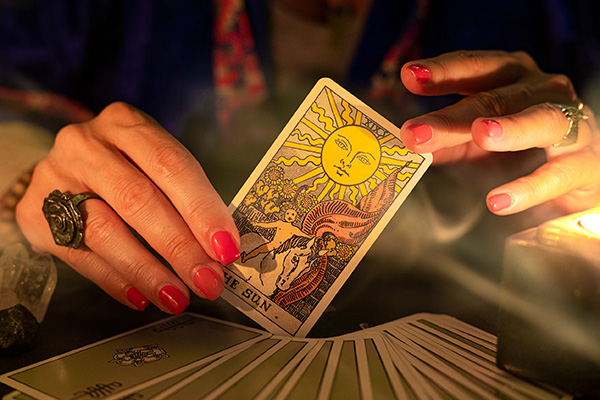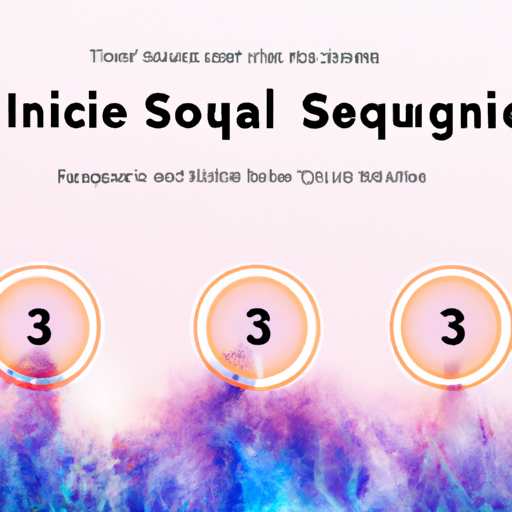Comprehending the Journey of Reconnecting with Your Elevated Self
 During my readings, I frequently sense that individuals’ energies are splintered — akin to an unfinished jigsaw puzzle with absent sections. This fragmentation signifies a widespread estrangement from the fundamental essence of who they are: the higher self.
During my readings, I frequently sense that individuals’ energies are splintered — akin to an unfinished jigsaw puzzle with absent sections. This fragmentation signifies a widespread estrangement from the fundamental essence of who they are: the higher self.
It’s hardly shocking that contemporary life pulls us in myriad directions, making us feel stretched, overloaded, and out of harmony. Navigating the demands of professional life, family responsibilities, and personal aspirations makes it seem as though the equilibrium of labor, rest, recreation, sleep, and spirituality has evaded our grasp.
Exacerbating this imbalance is our increasing impatience and intolerance. We become irked by delays, resist limitations, and find it challenging when circumstances stray from our meticulously crafted plans.
However, frustration and impatience merely obstruct the organic emergence of our greatest good. The individual we are eager to encounter or the opportunity we desire may not yet be prepared to enter our lives — or, more plausibly, we may not be poised to embrace it.
Signs of feeling lost, trapped, disoriented, or anxious indicate misalignment or disconnection from our higher self. This distortion severs our access to clear inner guidance and spiritual insight, leaving us adrift in a tumultuous sea of doubt, anxiety, and negativity.
Reconnecting with our higher essence revitalizes the natural flow of energy, inner wisdom, and divine guidance. We rediscover our wise inner genius, the quiet confidence that resides within, and the power to exist in harmony with our true self and fulfill our soul’s purpose.
Two voices are always echoing in our ears — the voice of fear and the voice of assurance. One is the noise of the senses; the other is the gentle whisper of the higher self ~ Charles B. Newcomb
What Is The Higher Self?
Your higher self is the non-material extension of your existence. It embodies your divine essence, acting as the spiritual roadmap or framework of who you are beyond just your physical form.
The higher self is not an independent personality or entity, but rather the metaphysical dimension of our being. It represents our heightened consciousness. Imagine it as your core spiritual blueprint containing all cumulative experiences and information of your soul contracts and soul family, your karmic obligations and life lessons, all prior lives, and your soul’s purpose for this lifetime.
In this lifetime, we have the option to allow our fear-driven human ego to steer our choices and actions, or we can align with our higher self, which guarantees our ongoing personal and spiritual development, inner guidance, and evolution of the soul. When we harmonize with our higher self, we pursue our destined life path and soul purpose, empowering us to meet life’s challenges with grace, wisdom, and resilience.
Realigning with our higher self grants us tranquility and strength in the present, fostering a sense of groundedness amidst life’s unpredictable nature. Physically, mentally, emotionally, and spiritually, we experience heightened calmness, centeredness, and guidance.
During these increasingly tumultuous times, nurturing a strong bond with our higher self has become more crucial than ever.
Your essence, hidden deep within, defines who you truly are. Some refer to it as the soul, the Higher Self, the true self, and so forth. The label is inconsequential once you recognize that you are far more than your physical appearance ~ Stephen Richards
Higher Self Alignment Practices
To synchronize and sustain alignment with your higher self, consider integrating some of these techniques into your routine. Each offers a distinct avenue to higher consciousness and spiritual harmony.
Automatic Writing: A practice where you write without conscious thought, allowing your subconscious or a spiritual guide to express through your words.
Breathwork: Deliberate breathing exercises can alleviate stress, boost energy, and enhance spiritual awareness.
Chakra Balancing: Engaging with the body’s energy centers can facilitate emotional and physical healing.
Crystal Healing: Harnessing the properties of crystals and gemstones can enhance your spiritual practices.
Daily Reflection: Dedicate a few moments daily for quiet reflection. Set an intention to reconnect with your higher self and contemplate choices that honor your soul’s truth.
Divination Practice: Tools like tarot cards, runes, astrology, pendulums, and the I-Ching are reliable divination mechanisms that can illuminate your spiritual journey.
Dreamwork: Actively exploring and interpreting dreams can yield insights into your subconscious development and spiritual growth.
Forest Bathing (Shinrin-Yoku): This Japanese tradition involves immersing oneself in nature while engaging mindfully with the environment through all five senses.
Journaling: Documenting your thoughts, dreams, and experiences can clarify your spiritual path.
Lucid Dreaming: Learning to be aware and in control of your dreams can empower personal and spiritual advancement.
Mandala Creation: Engaging in drawing or coloring mandalas as a meditative technique to focus the mind and connect with your inner self.
Mantra Chanting: Using repetitive sounds, words, or phrases to enter a meditative state and connect with a higher consciousness.
Meditation: Consistent meditation can help quiet the mind and foster connection with your inner self.
Mindfulness: Practicing mindfulness keeps you centered and fully present, nurturing a more profound bond with your inner being.
Nature Immersion: Spending time in the natural world and appreciating its beauty can enhance your sense of connection to both the universe and your role within it.
Prayer: A personal and spiritual endeavor that includes communicating with your higher power for guidance, protection, and support.
Psychic Readings: Psychic readings utilizing clairvoyance (clear seeing), clairaudience (clear hearing), clairsentience (clear feeling), or claircognizance (clear knowing) offer insights regarding your life and spiritual direction.
Qigong: An age-old Chinese practice combining movement, breath control, and meditation to cultivate and balance the body’s vital energy (qi).
Scrying: Engaging a reflective medium, such as a crystal ball or mirror, to receive insights or visions from the subconscious.
Shamanic Journeying: This method involves entering a trance-like state, often aided by rhythmic sounds or drumming, to seek guidance or healing from the spiritual realm.
Sound Healing: Utilizing sound vibrations from instruments like singing bowls or tuning forks to help balance your energy and promote healing.
Trance Channeling: Entering a trance state for spiritual beings or guides to convey messages through you. This practice requires experience and guidance to ensure safety and respect.
Yoga: A comprehensive practice integrating physical postures, breathing exercises, and meditation, benefiting both the body and mind.
Those who forge a precise and stable connection with their higher self genuinely awaken the genius within – accessing an infinite wellspring of creativity, intelligence, and flawless guidance available to all ~ David Wilcock
Higher Self Meditation: Accessing Your Soul Plan
Try this guided meditation to enhance your alignment with your higher self.
Create a sacred space: Start in a tranquil, comfortable location free from interruptions. Close your eyes and take deep, soothing breaths, allowing complete relaxation.
Set your intention: Silently express your desire to journey to the Akashic Records and align with the blueprint of your higher self. Visualize a gentle golden light enveloping you, instilling peace and purpose.
Visualize a path: Envision a radiant, shimmering path extending before you. Step onto this path and feel its warmth and supportive energy. Picture yourself lifting gently, as though carried by a stream of light.
Journey to the Akashic Records: Let the Light guide you across dimensions until you arrive at a grand temple of knowledge — the Akashic Records. Its vast doors are etched with sacred symbols embodying wisdom and truth.
Meet your spirit team: Your guides, ancestors, and guardian angels stand by you at the entrance. Embrace their loving and protective presence. They greet you with open hearts and navigate you through the threshold into the infinite repository.
Locate your soul plan: As your spirit team directs you through the sprawling halls, you’ll notice a unique, glowing book or document. This is the outline of your soul. Hold it reverently and feel its energy resonating within you.
Review your soul plan: Open the book with openness and reverence, examining its contents with full attentiveness. Observe the symbols, images, words, and feelings that resonate deeply with your purpose and utmost potential. Trust the revelations that come, and let your intuition guide you in interpreting the messages you perceive and feel. Picture yourself conversing with your spirit team about the contents, seeking their help in interpreting and fully understanding it.
Embody your soul plan: Allow the profound wisdom of the plan to permeate your being, gradually realigning your thoughts, actions, and intentions with your soul’s truth. As you integrate this wisdom, experience a profound sense of clarity, balance, and harmony settling within.
Express gratitude: Carefully close the book or document, return it to its original position, and step back. Thank your guides, ancestors, and angelic supporters for their assistance. Feel their affirmation of your intention to live in harmony with your higher self.
Return to the present: Follow the guiding light back along the path, returning to physical awareness. Wiggle your fingers and toes, take a deep breath, and open your eyes whenever you’re ready.
By maintaining alignment with your higher self, life gains renewed significance. You encounter greater clarity, tranquility, and purpose. Challenges transform into chances for growth, and your path unfolds with divine timing. Reconnecting with your higher self empowers you to live authentically, influenced by the boundless wisdom and love residing within.
By establishing higher self alignment as a daily practice, you honor your soul’s journey and access the full potential of your divine blueprint. Embrace the entirety of your being and confidently step into the life meant for you.
|
Shani is a certified practitioner in Reiki, aromatherapy, reflexology, body spin, and animal telepathy, having undergone psychic development training at the Arthur Findlay College of Psychic Research in England. As a published writer, her articles and forecasts have appeared in numerous esteemed magazines and online psychic platforms, and she has read for many renowned personalities and even heads of state in Africa. Thanks to her empathetic nature, individuals find it easy to connect with her. Each month, she participates in a psychic circle, and the wisdom she receives from Spirit continues to astonish everyone present. Although born in London, Shani has traveled extensively and explored the art of African Mysticism, bringing a unique perspective to those seeking her extraordinary abilities. Her travels have highlighted a consistent yearning among clients to feel connected to the essence of their being. Experience a reading with Shani at PsychicAccess.com. |
Understanding the Journey of Reconnecting with Your Higher Self
In our current fast-paced and disorderly environment, many people discover they feel isolated, adrift, and unfulfilled. They crave a deeper sense of purpose, significance, and inner tranquility. This is where the notion of reconnecting with your higher self becomes relevant. Reintegrating with your higher self can catalyze a profound change, resulting in a more genuine and satisfying life. In this piece, we’ll delve into the journey of understanding and reconnecting with your higher self.
What is the Higher Self?
The higher self, often referred to as the soul or true self, represents the part of us that goes beyond the physical body and ego. It is our link to the divine, the source of all insight, affection, and guidance. The higher self is frequently depicted as the purest manifestation of our being, liberated from the constraints and conditioning of the material realm.
Understanding the Journey of Reconnecting with Your Higher Self
1. Self-Reflection and Awareness: The initial step in reconnecting with your higher self is cultivating self-reflection and awareness. Take time to observe your thoughts, feelings, and behaviors free from judgment. This practice enables you to recognize the patterns and beliefs that may be obstructing your connection to the higher self.
2. Releasing Limiting Beliefs: Many individuals carry limiting beliefs that can impede their connection with their higher self. Such beliefs often manifest as thoughts like “I am not worthy,” “I am insufficient,” or “I don’t deserve joy.” Acknowledge these beliefs and consciously decide to release them. Substitute them with positive affirmations that resonate with your true self.
3. Nurturing Mindfulness and Presence: Mindfulness and being present serve as powerful tools for reconnecting with your higher self. Focus on being completely present during daily activities or within meditation. By directing your attention to the present, you can quiet your mind and create space for your higher self to surface.
4. Engaging with Nature: Nature possesses an incredible ability to facilitate our reconnection with the higher self. Spend time outside, whether walking in a park, hiking in the mountains, or simply sitting by a stream. Allow the beauty and tranquility of nature to awaken your senses and draw you closer to your true essence.
5. Developing Intuition: Intuition acts as the voice of the higher self. By honing your intuition, you can access the wisdom and guidance that your higher self provides. Pay attention to your gut feelings, follow your instincts, and trust your inner voice. The more you trust and act according to your intuition, the more vividly your connection to your higher self will flourish.
6. Practicing Self-Love and Self-Care: To reconnect with your higher self, you must nourish and care for yourself. Prioritize self-love and self-care by engaging in activities that bring you joy, practicing self-compassion, and setting healthy boundaries. By focusing on your well-being, you create an environment where your higher self can thrive.
7. Embracing Authenticity: Embrace your true self and release the compulsion to adapt to societal expectations or the views of others. Your higher self is unique, with its distinct purpose and path. Accepting your authenticity allows you to live in accordance with your true self and attain a deeper, more fulfilling existence.
Reconnecting with your higher self is a lifelong odyssey that demands patience, commitment, and self-love. It involves a journey of self-discovery, growth, and transformation. By recognizing and embracing this journey, you can embark on a path that leads to a more meaningful and purpose-driven existence, guided by the wisdom and love of your higher self. Continue reading












